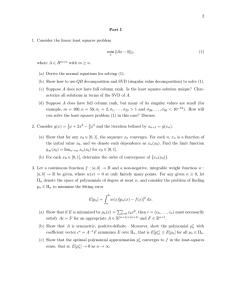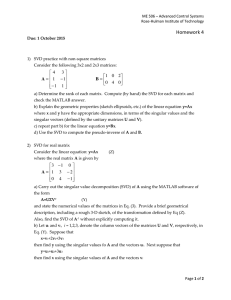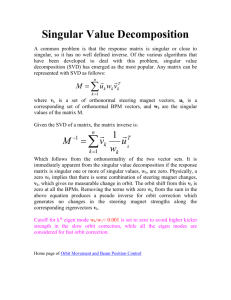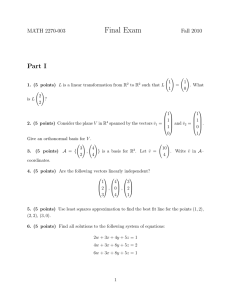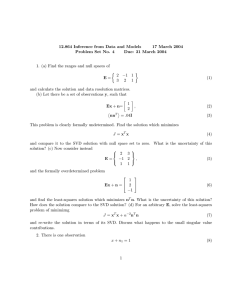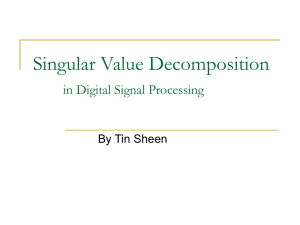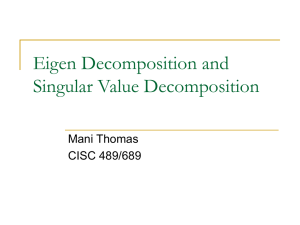12: The Singular Value Decomposition
advertisement
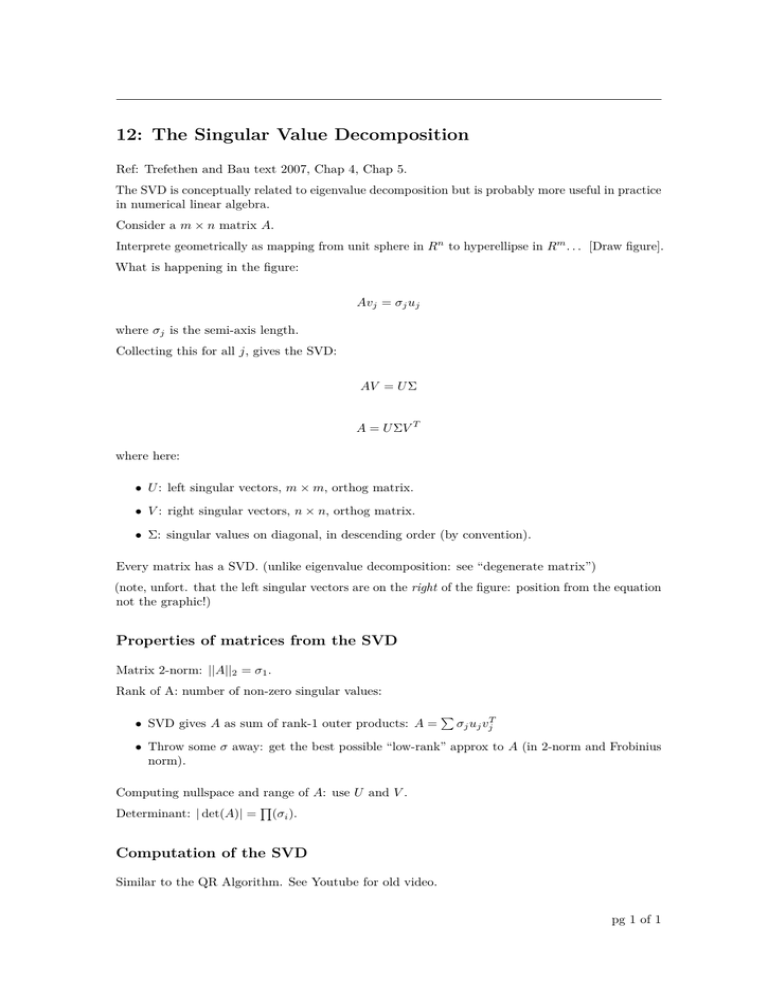
12: The Singular Value Decomposition Ref: Trefethen and Bau text 2007, Chap 4, Chap 5. The SVD is conceptually related to eigenvalue decomposition but is probably more useful in practice in numerical linear algebra. Consider a m × n matrix A. Interprete geometrically as mapping from unit sphere in Rn to hyperellipse in Rm . . . [Draw figure]. What is happening in the figure: Avj = σj uj where σj is the semi-axis length. Collecting this for all j, gives the SVD: AV = U Σ A = U ΣV T where here: • U : left singular vectors, m × m, orthog matrix. • V : right singular vectors, n × n, orthog matrix. • Σ: singular values on diagonal, in descending order (by convention). Every matrix has a SVD. (unlike eigenvalue decomposition: see “degenerate matrix”) (note, unfort. that the left singular vectors are on the right of the figure: position from the equation not the graphic!) Properties of matrices from the SVD Matrix 2-norm: ||A||2 = σ1 . Rank of A: number of non-zero singular values: • SVD gives A as sum of rank-1 outer products: A = P σj uj vjT • Throw some σ away: get the best possible “low-rank” approx to A (in 2-norm and Frobinius norm). Computing nullspace and range of A: use U and V . Q Determinant: | det(A)| = (σi ). Computation of the SVD Similar to the QR Algorithm. See Youtube for old video. pg 1 of 1

